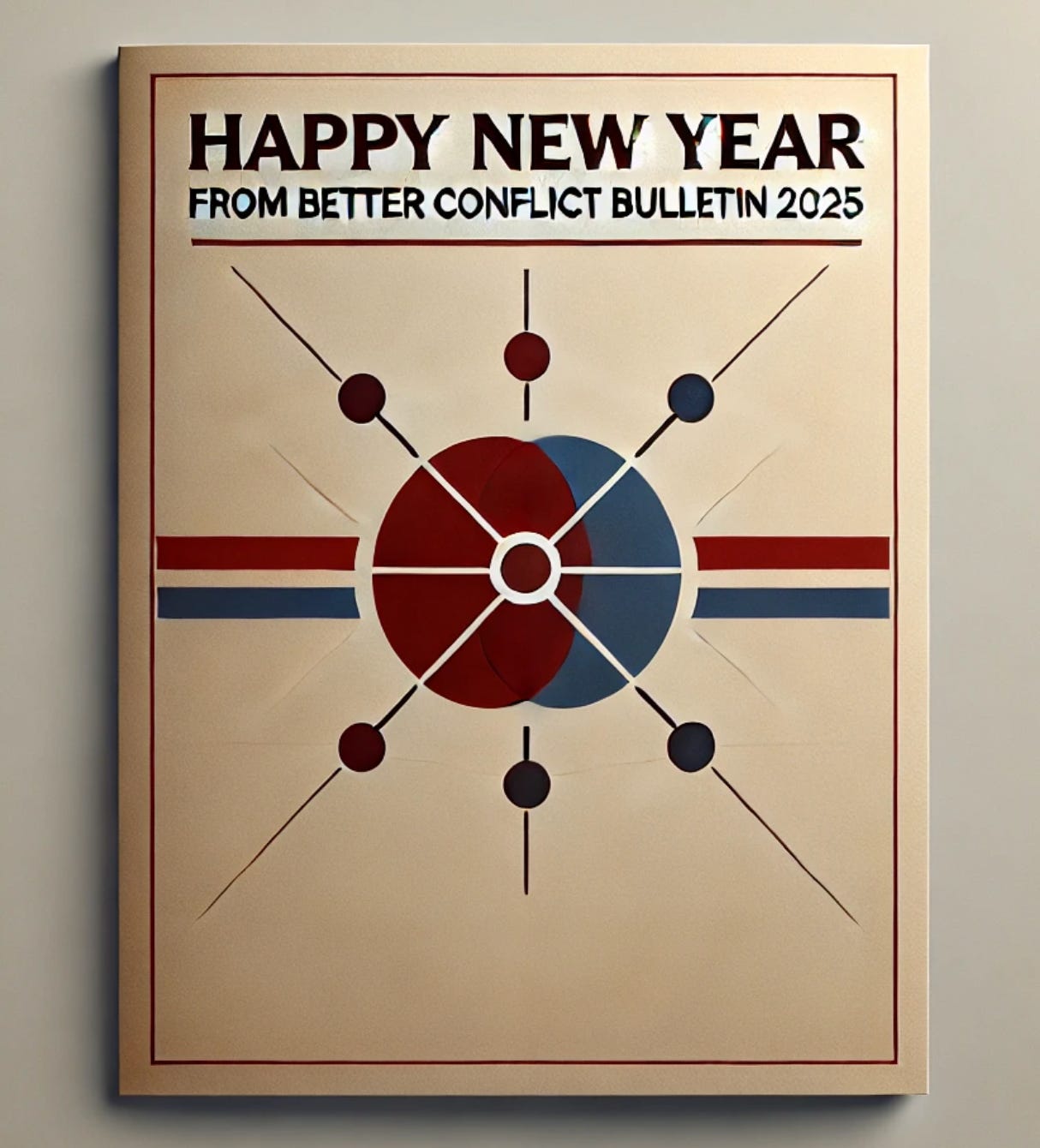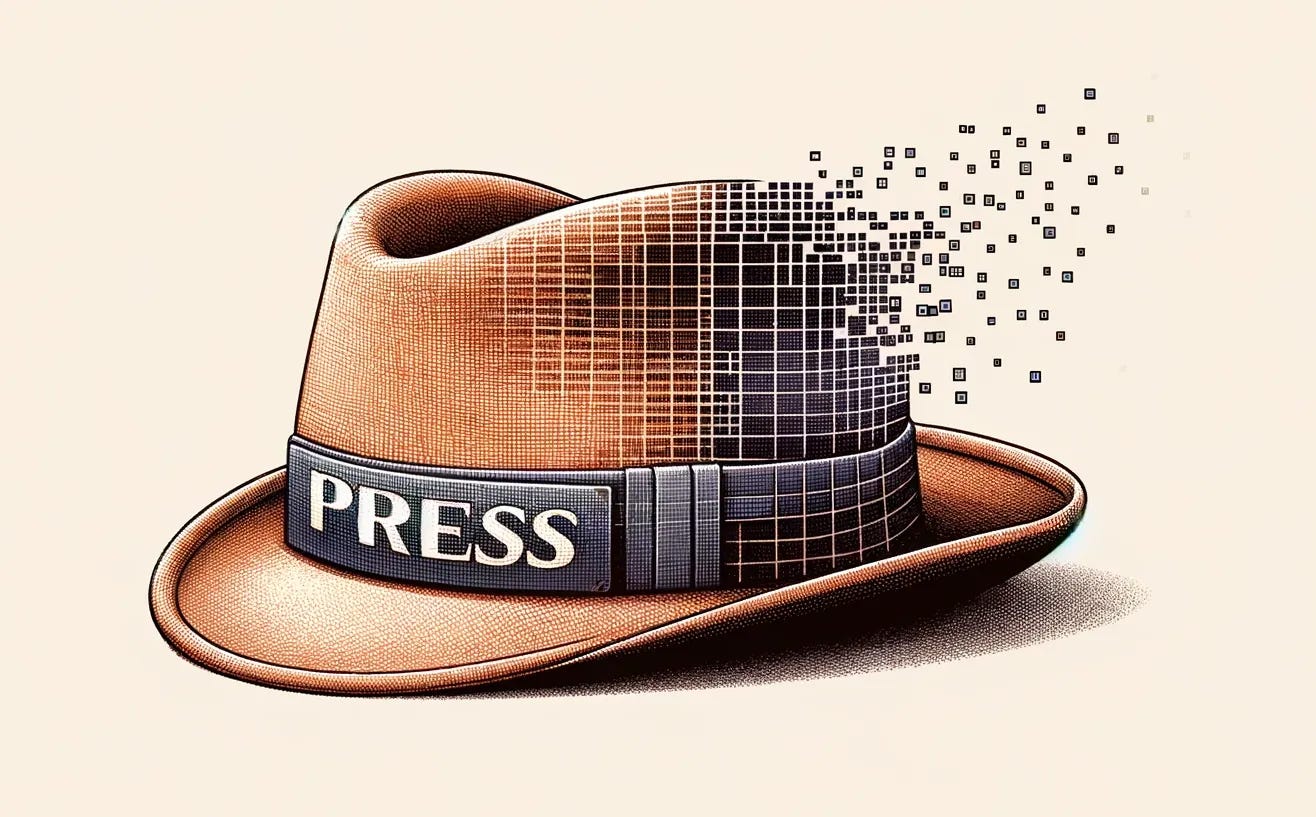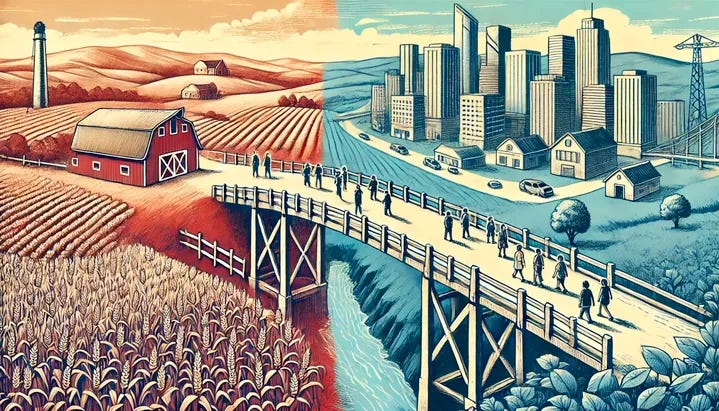The Better Conflict Year-in-Review — BCB #132
Our and your favorite issues from the past year
It’s been a big year for BCB! As we wrote last week, America and the world are rife with serious conflict, but polarization is also being recognized for the emergency that it is. To close out 2024 and ring in 2025, we’ve collected some of our best and most popular issues from the last year, organized into five categories.
5. Media
If journalists don't believe in objectivity, what do they believe in?
Our exclusive analysis of three years of media industry articles show that when journalists talk about objectivity, they talk about it negatively. As we wrote, “Perhaps objectivity is an incoherent ideal. Perhaps the journalistic orthodoxy that grew up around it is no longer tenable. But if journalists publicly abandon it without articulating a convincing replacement, audiences will only hear that the profession has given up on truth.”
Does partisan media actually persuade anyone?
There’s obviously no shortage of media peddling the views of one side, and now there’s substantial research indicating that people consuming it are more likely to adopt those views. We examine a pretty dire problem and the effects of some deceptively simple solutions, like turning away from hyper-partisan sources and towards more balanced ones.
Representing Race in Machines and Media
Google’s Gemini AI tried so hard not to fall prey to racist stereotyping that it overcorrected, creating Black Vikings and Native American Founding Fathers. Making an AI image generator that is actually representative of the world we live in requires asking some very tough questions: Which axes of diversity matter? Whose demographics should be matched? And how do we treat fact versus fiction?
4. Relating Across Divides
Love in the Time of Polarization
It’s not just shared politics that matter to people looking for a partner, but also a shared approach to political engagement. And as opposed to a generation ago, parents now have far stronger opinions about the politics of their kids’ significant others than their race. It’s still possible to date across the new color line, but it requires cultivating a shared understanding of and curiosity about one another.
When We Think The Other Side is Bad, We Act Badly
Both Red and Blue overestimate the other side’s willingness to behave badly. “Such assumptions make people more likely to support antidemocratic behavior on their own side, which, in turn, creates a race to the bottom as each side sets out to preempt anticipated betrayal.” The good news is that these so-called metaperceptions can be corrected.
3. Key Issues
Not Just Bigotry, not Just Economics: Why Rural Voters Are Red
The rural-urban partisan divide is unmistakable, but most of the explanations for this trend are short-sighted at best and bigoted at worst. Small minorities on each side have fueled a vicious cycle of mutual contempt and hatred which, coupled with economic factors and racial resentment, has caused this divide to grow. That said, there are organizations working to change how urban Americans talk to rural folks, and vice versa.
Making the Climate a Blue Issue Was a Mistake
Climate change can and should be a cause that people across the political spectrum are invested in, but it isn’t. We looked at how we got here, and how reframing the issue for bipartisan support is both possible and essential. By, for example, focusing on sustainability as a way to achieve growth and prosperity, it could be fairly simple to get a broader array of Americans onboard.
2. Making Democracy Work
53 Roles That Make Democracy Work, and The People In Them
Bridge-building. Problem-solving. Journalists, activists, election protectors and visionaries. We’ve never seen a map of what it takes to keep democracy running quite like Guy and Heidi Burgess’ “Massively Parallel Peacebuilding” series. There are lots of different ways you could be involved in better conflict, and lots of organizations already working on different parts of the problem.
Should Abortion Laws Be The Same Everywhere?
Blue wants abortion to be a national right, while Red wants individual states to decide. You may be sure you know the right answer in this case, but all sorts of political issues boil down to universal rights versus community self-determination. Both are quintessentially American concepts, the products of long and deeply considered intellectual traditions. But they don't play nicely together.
1. Essentials
Violent Conflict is Destructive. Nonviolent Conflict is Essential
2024 gave us two assassination attempts and one murdered CEO, so it was time to take a close look at the venerable field of nonviolent conflict, stretching back to MLK, Gandhi, and beyond. Violence may sometimes seem like the pragmatic solution, but the data shows that violent political movements are far less likely to achieve their goals. Yet there are any number of ways to apply force without violence—protests, boycotts, civil disobedience, any many more—that have proven effective.
How To Win and Lose and Election
This issue, published the morning of November 5th, was one of our most popular of the year. We offered tips for how to handle either a victory or a defeat in a historically fraught election, and what we owe to each other in the aftermath. Our promises to one another have always been the key to keeping us all safe, and it’s important to remember these communal bonds even in moments when it feels like they are fraying beyond repair.
Thank you so much for reading BCB! Your support matters tremendously, because we pay our writers. We look forward to bringing you a lot more about having better conflict and fighting for our democracy in the year to come. If you like what we do, please subscribe!







